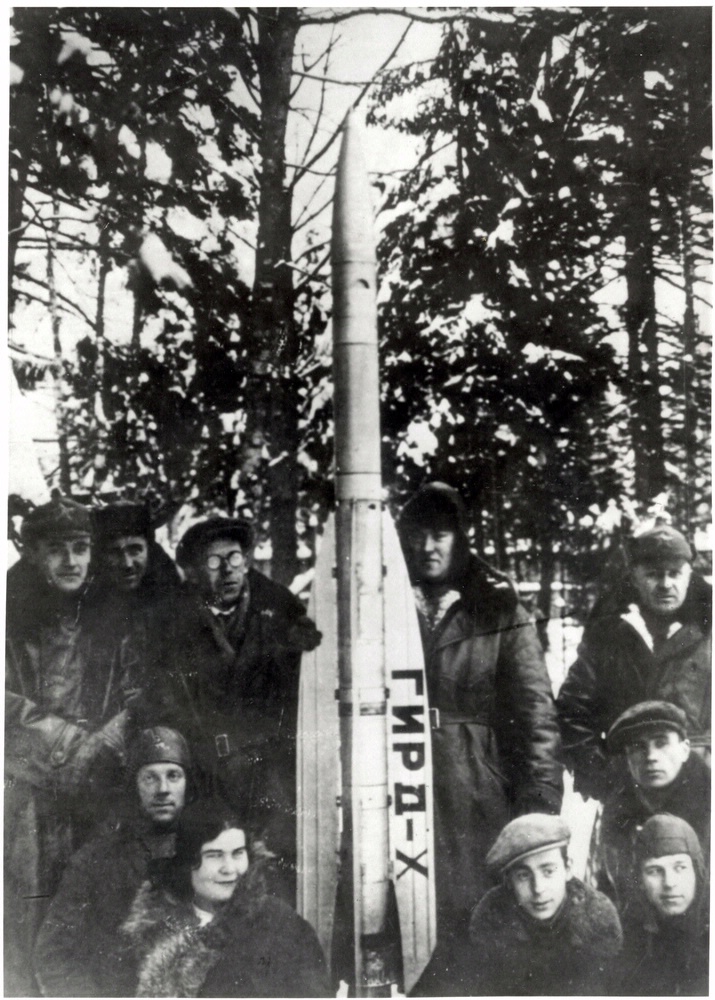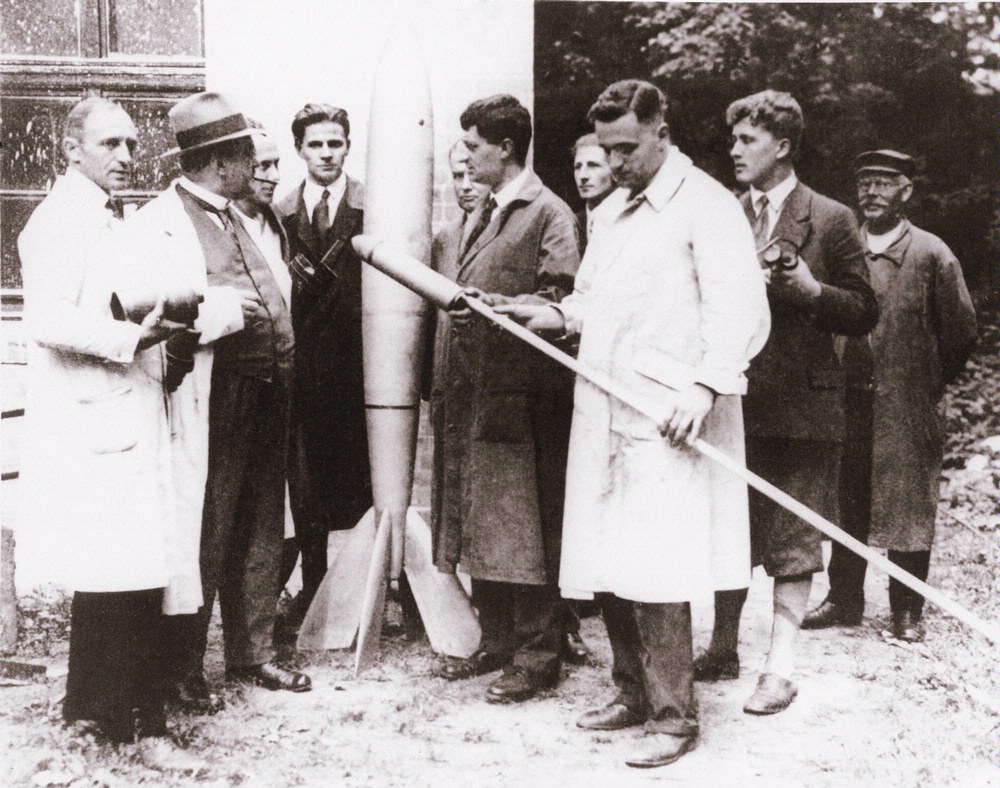Rocket Societies
Beginning in the late 1920s, spaceflight enthusiasts banded together into groups to advance their cause. These "rocket societies" especially flourished in Russia, Germany, and the United States. Most quickly moved toward developing the one technology that pointed a way into space: the liquid-fuel rocket.
The rocket societies spun off the first groups of professional rocket engineers in corporations and government laboratories. With the world again edging toward war, they inevitably worked on weapons. By the end of World War II in 1945, rocket technology had reached a state of maturity.

The American Interplanetary Society
A group comprised mostly of science fiction writers formed the American Interplanetary Society(AIS) in New York City in 1930. The fact that science fiction writers predominated was unique to America. It reflected that genre's flourishing and the dearth—with the exception of Robert Goddard—of serious space theoreticians in America.
This explosion of space fantasy in the 1920s and '30s was a double-edged sword for spaceflight advocates. It inspired young people to believe in the possibility of space travel but convinced many adults that the idea was absurd.

The American Rocket Society
The AIS quickly focused on liquid-fuel rockets. In 1931 founders Ed and Lee Pendray visited Berlin, where they saw a rocket test stand and befriended Willy Ley, an influential German spaceflight enthusiast. The first AIS tests took place in rural New Jersey that year, and their first successful launch came in 1933.
With the shift toward practical experiments, engineers and technicians came to dominate AIS leadership. In 1934 they voted to change the society's crackpot-sounding name to the American Rocket Society (ARS).

Group for the Study of Reactive Motion (GIRD, Gruppa Izucheniya Reaktivnogo Dvizheniya)
The Moscow-based Group for the Study of Reactive Motion (GIRD, Gruppa izucheniya reaktivnogo dvizheniya) was a Soviet research bureau founded in 1931 to study various aspects of rocketry. In 1933 it was incorporated into the Reaction-Engine Scientific Research Institute (RNII, Reaktivnyy nauchno-issledovatel’skiy institut). There were a number of amateur groups and solitary researchers in existence, but GIRD was the Soviet Union’s first large professional rocketry program. The group was organized as four brigades and ten projects to study rocket engines and winged and wingless missiles. Aeronautical engineer Sergey Korolev, the future leader of the Soviet space program, was its director, as well as a brigade leader and the chairman of its technical council. Friedrich Zander headed the GIRD's 1st Brigade, which comprised a research team transferred from the Institute of Aircraft Engine Construction (IAM). Tsander had speculated on the use of a rocket for space travel as early as 1907 and was one of the founding members of the short-lived Society for the Study of Interplanetary Communication in 1924.

Verein für Raumschiffahrt (VfR, Society for Space Travel)
The Verein für Raumschiffahrt (VfR, Society for Space Travel) was founded in 1927 by church administrator Johannes Winkler, rocket experimenter Max Valier and science writer Willy Ley and included the German-Romanian Hermann Oberth. Space travel and rocketry had gained popularity in German speaking Central Europe following the June 1923 publication of Oberth’s book Die Rakete zu den Planetenräumen (The Rocket into Interplanetary Space). Ley and Oberth subsequently served as advisers for filmmaker Fritz Lang's 1929 film Frau im Mond (The Woman in the Moon). Beginning in 1930, several members conducted liquid-fuel rocket experiments and the society itself founded the Raketenflugplatz (Rocketport) Berlin in fall 1930. It survived until the Nazi government put it out of business in 1934. Several members, notably Wernher von Braun, went on to be important in German Army rocket development, leading to the V-2 missile in World War II. He and others became important rocket engineers in the U.S. after the war.

The “Suicide Squad” in California
One of the most important American rocket groups formed in 1935–36 in Pasadena, California. Frank Malina emerged as the leader of a small band at the California Institute of Technology (Caltech) under the famous aerodynamicist Theodore von Kármán. For their dangerous experiments with rocket propellants, they were soon nicknamed the “Suicide Squad.”
In 1942 von Kármán, Malina, and others founded Aerojet Corporation to mass produce takeoff-assist rockets for heavily loaded airplanes. The Caltech group soon became the Jet Propulsion Laboratory—avoiding the term “rocket,” which many still considered a Buck Rogers fantasy.




